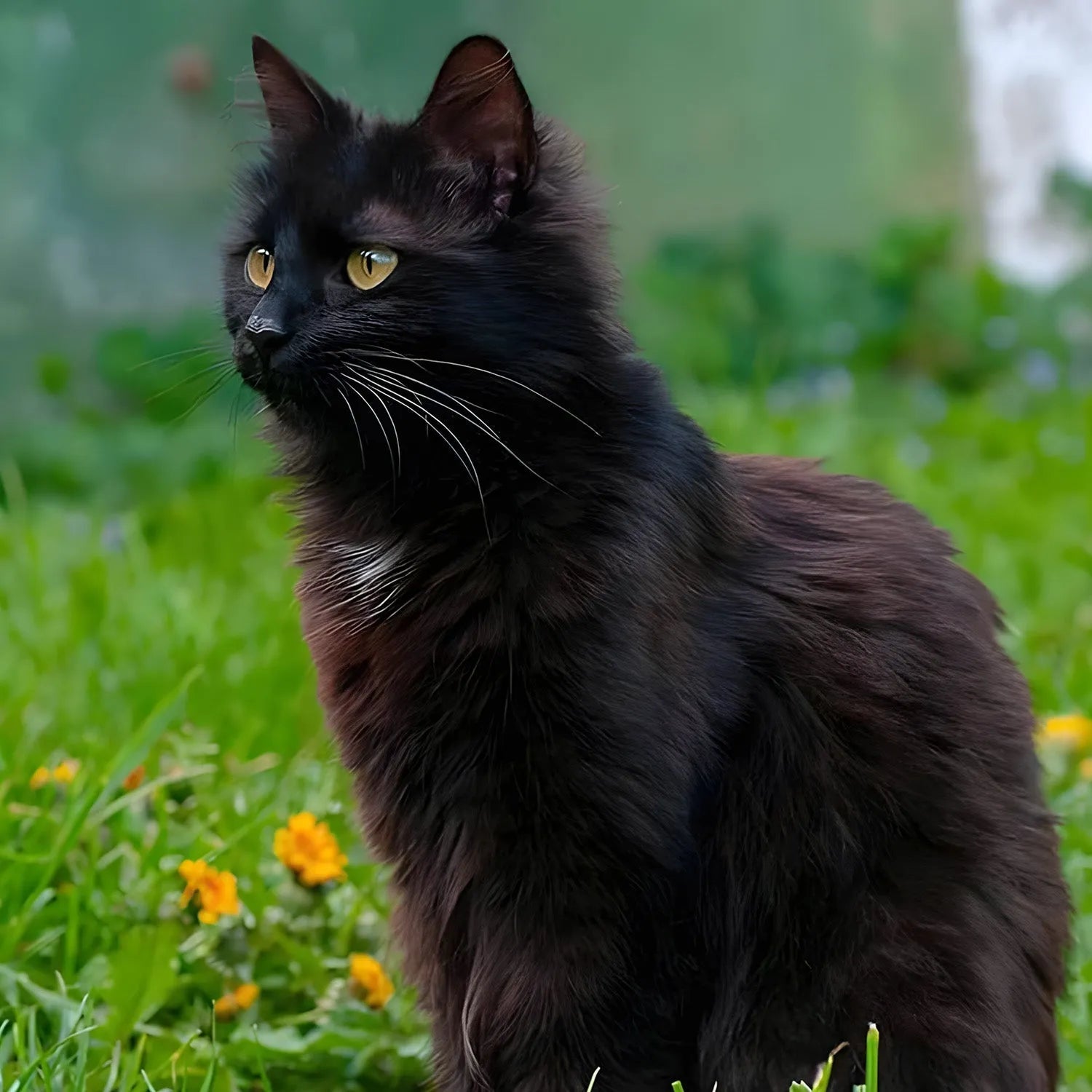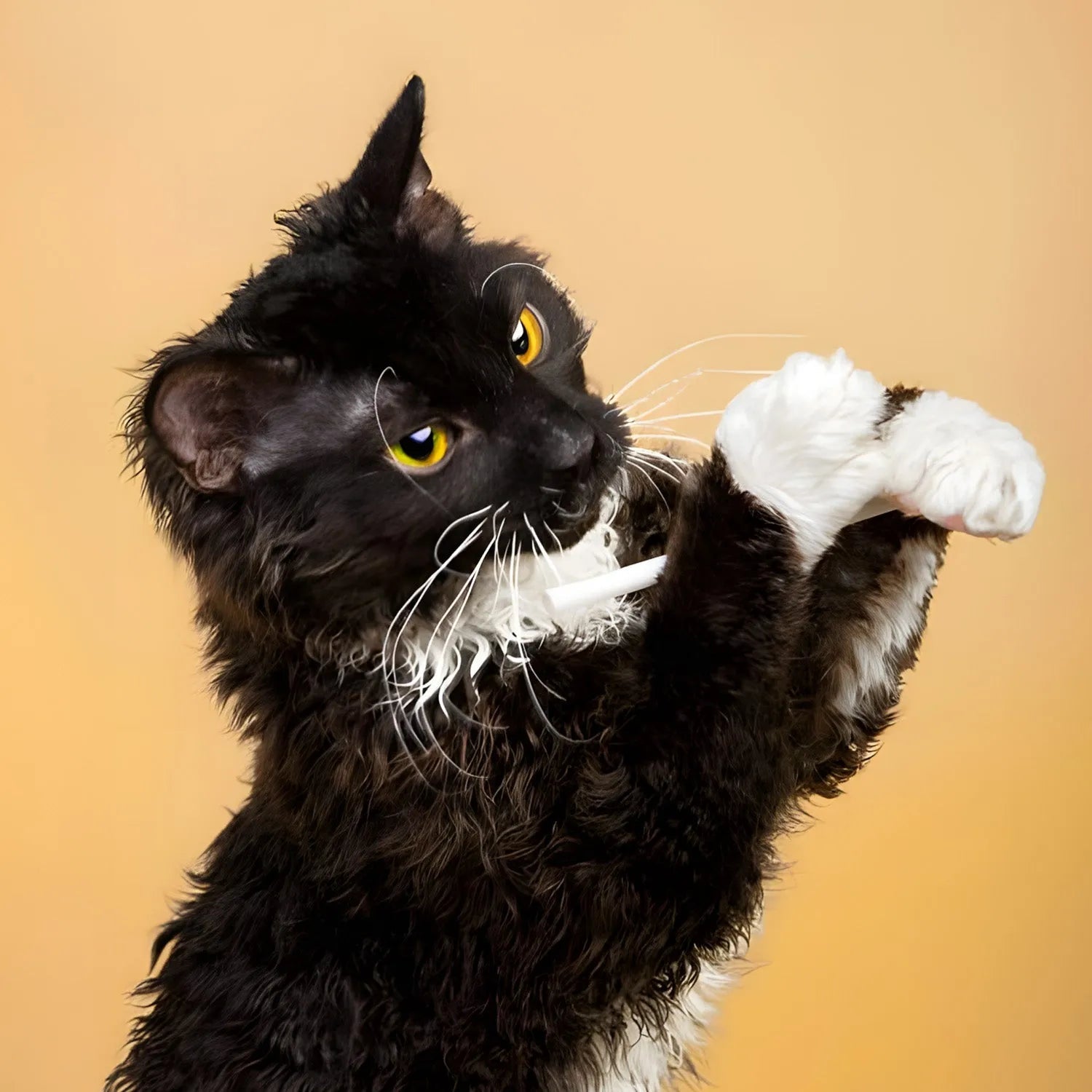Tonkinese: The Friendly and Affectionate Feline
Introduction
The Tonkinese cat is a friendly, playful, and affectionate breed that perfectly blends the best traits of its Siamese and Burmese ancestors. Known for its strikingly beautiful coat and captivating blue-green eyes, the Tonkinese has a lively personality that makes it a popular companion. These cats are incredibly sociable and love being at the center of family activities, making them ideal for households with children, other pets, or owners who spend a lot of time at home. In this blog, we’ll explore the Tonkinese cat’s lifestyle, behavior, grooming needs, and how it interacts with humans and other pets.
Ratings (1-5)
-
Environmental Adaptability: 4
-
Food Consumption: 4
-
Need for Companionship: 5
-
Trainability: 5
-
Tolerance of Children: 5
-
Ease of Domestication: 5
History and Origins
The Tonkinese breed is a relatively modern breed, developed in the mid-20th century through the intentional crossing of Siamese and Burmese cats. Breeders wanted to create a cat that combined the best characteristics of both breeds—the affectionate, people-oriented nature of the Burmese and the playful, vocal personality of the Siamese.
The first Tonkinese cats, originally known as "Golden Siamese," were bred in the United States and Canada, and the breed quickly gained popularity due to its stunning appearance and loving nature. Officially recognized by The International Cat Association (TICA) and the Cat Fanciers’ Association (CFA) in the 1970s, the Tonkinese has become a favorite among cat lovers for its sociable and outgoing personality.
Physical Characteristics and Colors
The Tonkinese is a medium-sized cat with a muscular, athletic build. They have a sleek, well-proportioned body that combines the elegance of the Siamese with the sturdiness of the Burmese. Their heads are slightly rounded, with high cheekbones and large, almond-shaped eyes that are typically aqua or green-blue, adding to their captivating appearance.
One of the most notable features of the Tonkinese is its coat, which is short, soft, and silky. Their coat comes in a variety of striking color patterns, including:
-
Pointed: Darker color on the face, ears, paws, and tail, similar to the Siamese.
-
Mink: A subtle blend of darker points and lighter body color, with a more muted contrast.
-
Solid: A uniform coat color, more similar to the Burmese.
Common Tonkinese coat colors include:
-
Natural Mink: A rich brown color with a lighter body.
-
Champagne Mink: A pale cream color with darker, champagne-colored points.
-
Blue Mink: A soft, bluish-gray color with darker blue points.
-
Platinum Mink: A pale silver color with gray points.
The Tonkinese's unique coat colors, combined with its striking eyes, make this breed truly stand out.
Lifestyle and Behavior
Tonkinese cats are known for their outgoing, affectionate, and playful personalities. They are social cats that love being around people and are happiest when they are part of the action. These cats are known for following their owners around the house, always curious and eager to be involved in whatever is happening. Whether it’s playtime, mealtime, or relaxation, the Tonkinese will want to be right there by your side.
Tonkinese cats are also highly vocal, inheriting this trait from their Siamese ancestors. They love to "talk" to their owners and will often engage in conversations with a variety of meows, trills, and chirps. While they are not as loud as the Siamese, they are still quite vocal and will let their owners know when they want attention or affection.
These cats are incredibly playful and enjoy interactive games, such as fetch, puzzle toys, and climbing. They are also known for their love of jumping and climbing, so providing them with plenty of vertical space, such as cat trees or shelves, is essential to keep them happy and entertained.
Trainability and Intelligence
Tonkinese cats are highly intelligent and can be trained to follow commands, perform tricks, and even walk on a leash. They are quick learners and respond well to positive reinforcement techniques, such as treats and praise. Because of their playful and curious nature, Tonkinese cats enjoy mental challenges and activities that stimulate their minds.
Training sessions with Tonkinese cats should be interactive and fun, as they thrive on attention and enjoy the challenge of learning new things. Puzzle toys, interactive feeders, and games that involve problem-solving are great ways to keep their minds sharp and engaged. These cats are eager to please and love showing off their intelligence through games and training.
Tonkinese cats are also known for their problem-solving abilities, and they can sometimes figure out how to open doors or cabinets to access hidden treats or toys. Owners should provide plenty of toys and activities to keep their Tonkinese mentally stimulated and prevent boredom.
Social Behavior and Human Interaction
Tonkinese cats are incredibly social and affectionate animals. They form strong bonds with their human family members and are known for being loyal, loving, and always eager to be near their owners. These cats are not shy about seeking attention and will often nuzzle, paw, or meow at their owners when they want to be petted or played with.
Tonkinese cats thrive on human interaction and do not like being left alone for long periods. They are happiest in homes where someone is around for most of the day, or they have other pets to keep them company. These cats are known for their love of physical contact, and they will often curl up in their owner’s lap, snuggle beside them in bed, or simply sit close by to feel connected.
Their social nature also extends to visitors and strangers. Tonkinese cats are generally friendly and outgoing, greeting guests with curiosity and enthusiasm. They are not shy or reserved, making them excellent companions for homes with a lot of activity or visitors.
Compatibility with Children and Other Pets
Tonkinese cats are excellent companions for children due to their playful and tolerant nature. They enjoy interactive play and are generally patient with children’s antics, provided they are treated with respect. Tonkinese cats are gentle and affectionate, making them ideal pets for families with young kids who want an active and loving companion.
In addition to being good with children, Tonkinese cats also tend to get along well with other pets, including dogs. Their confident and friendly nature allows them to integrate well into multi-pet households, and they often enjoy the company of other animals. Proper introductions are important, but Tonkinese cats are generally accepting of new furry family members and are known for their ability to get along with both cats and dogs.
Grooming and Care
The grooming needs of a Tonkinese cat are minimal due to their short, sleek coat. Weekly brushing is usually sufficient to remove loose hairs and keep their coat looking shiny and healthy. Because their fur is short and close-lying, Tonkinese cats are not prone to excessive shedding or matting, making them a low-maintenance choice for pet owners.
In addition to regular brushing, Tonkinese cats require routine dental care, ear cleaning, and nail trimming to maintain their overall health. Their low-maintenance grooming needs make them ideal for owners who want a beautiful yet easy-to-care-for cat.
Health and Lifespan
Tonkinese cats are generally healthy, but like all breeds, they can be prone to certain genetic health conditions. Some common health concerns include progressive retinal atrophy (PRA), a condition that affects their eyesight, and respiratory issues, particularly if they inherit the slender, elongated head of their Siamese ancestors. Responsible breeders screen for these conditions to reduce the risk of passing them on to future generations.
Regular veterinary check-ups, a balanced diet, and maintaining a healthy weight are essential to keeping your Tonkinese cat in good health. With proper care, Tonkinese cats typically live 12-15 years or more, making them long-term companions for any family.
Environmental Adaptability
Tonkinese cats are adaptable and can thrive in a variety of living environments, whether in a small apartment or a larger home. They are particularly well-suited to indoor living, where they can enjoy a calm and predictable routine. Because of their social and affectionate nature, Tonkinese cats do best in homes where they have plenty of interaction with their human family members or other pets.
Because of their playful and curious nature, Tonkinese cats appreciate having access to climbing trees, interactive toys, and plenty of opportunities for play. While they can adapt to most living situations, they are happiest in environments where they receive plenty of attention and stimulation.
Feeding Requirements
A balanced diet is crucial for maintaining the health and energy levels of
Tonkinese cats. High-quality cat food that is rich in protein is recommended to support their muscular build and overall well-being. Fresh water should always be available. Because Tonkinese cats are active and energetic, it’s important to monitor their food intake to ensure they are receiving the proper nutrition to support their activity levels.
Consult your veterinarian for specific dietary recommendations based on your cat's age, weight, and health needs. Regular play sessions and activities that encourage physical movement can also help keep your Tonkinese healthy and fit.
Conclusion
The Tonkinese is a delightful, affectionate, and playful breed that offers the perfect blend of intelligence, social interaction, and beauty. Their strong bonds with their human companions, combined with their playful and outgoing personalities, make them wonderful pets for families, individuals, or anyone looking for a loving and interactive cat. If you're searching for a loyal and energetic feline friend, the Tonkinese may be the perfect fit.
For more information about other cat breeds and pet care tips, stay tuned to our blog!
References:
-
Davis, M. (2021). "The Social and Affectionate Tonkinese Cat." *Journal of Feline Studies*, 35(3), 215-230.
-
Thompson, A. (2020). "Caring for Your Tonkinese: A Comprehensive Guide." *Cat Lover’s Magazine*, July issue, pp. 25-33.
-
Harris, E. (2019). "Health and Wellness in Tonkinese Cats." *Veterinary Journal*, 79(2), 123-137.


